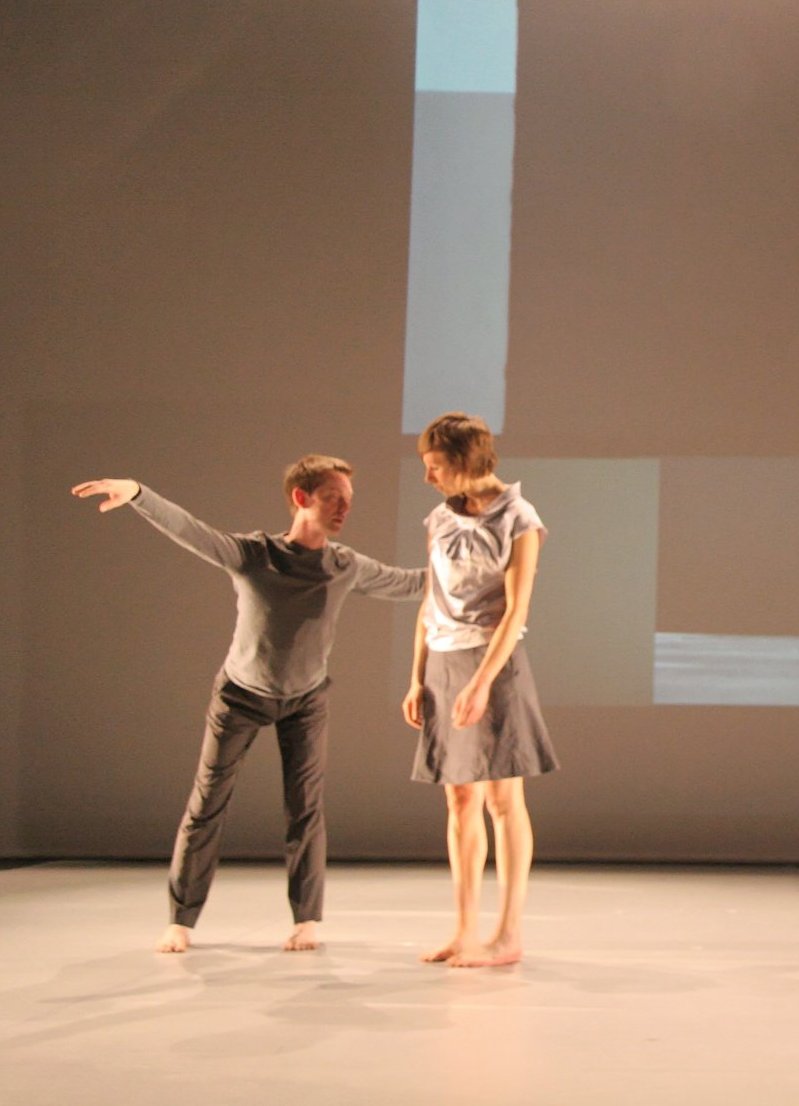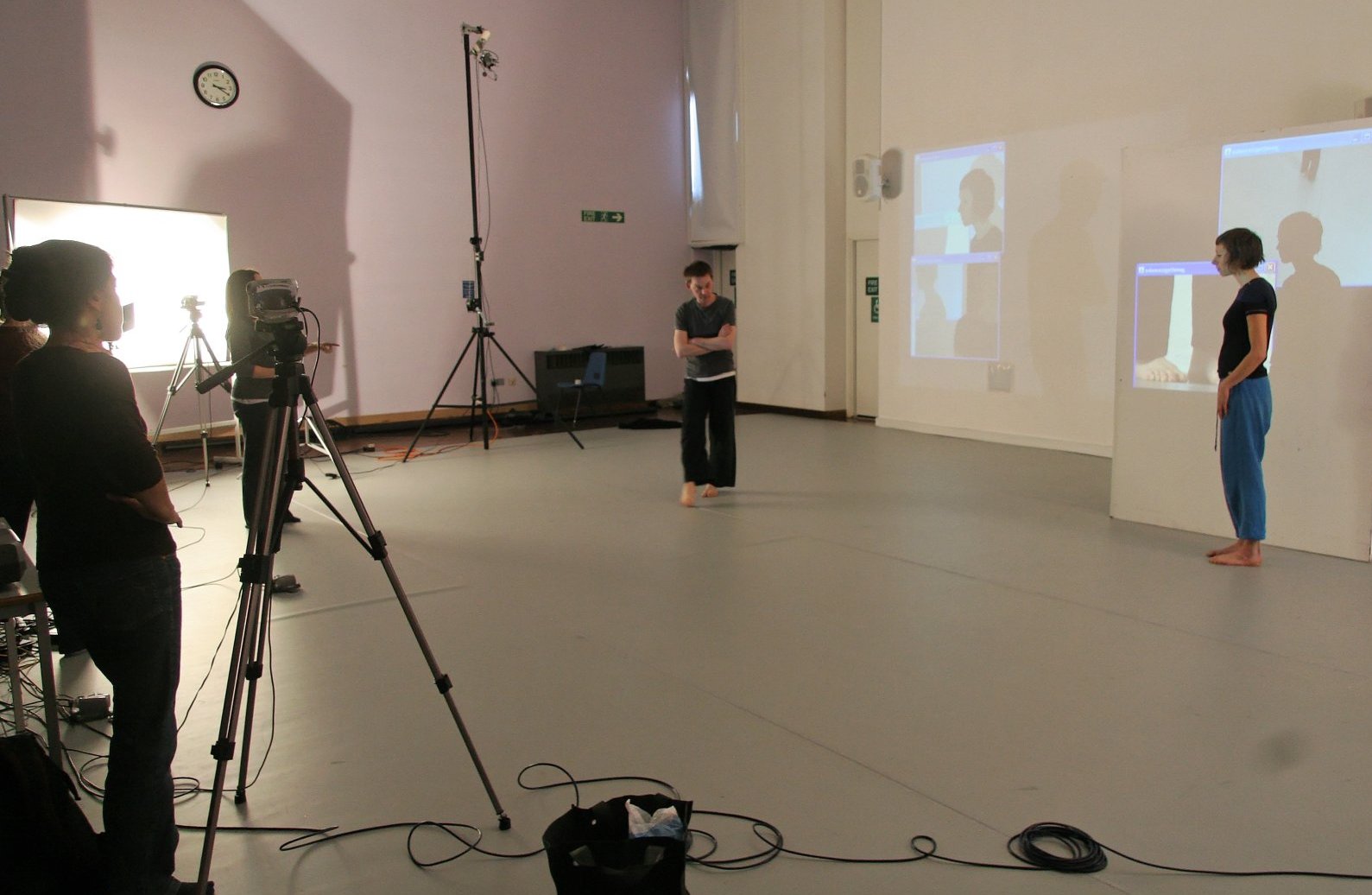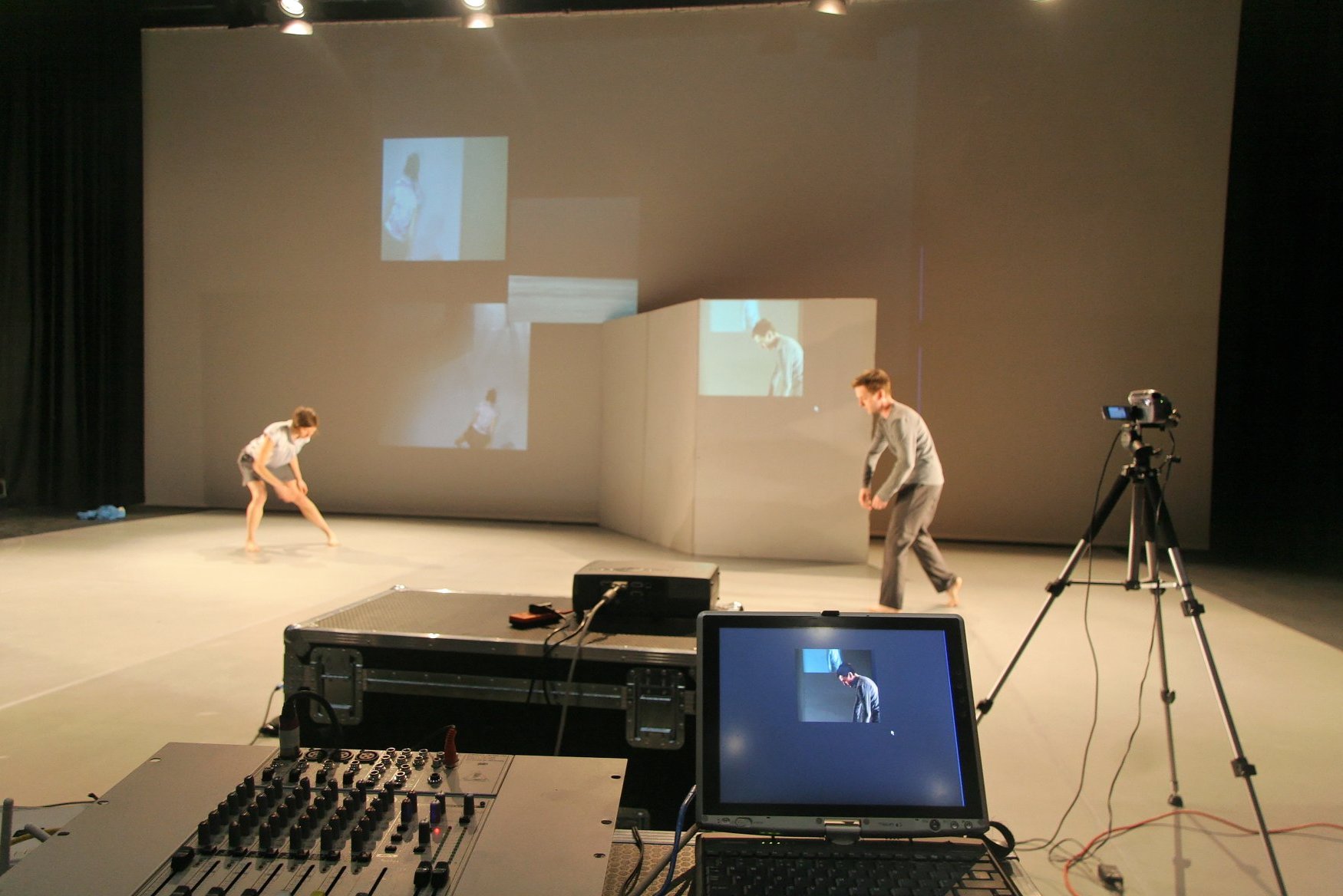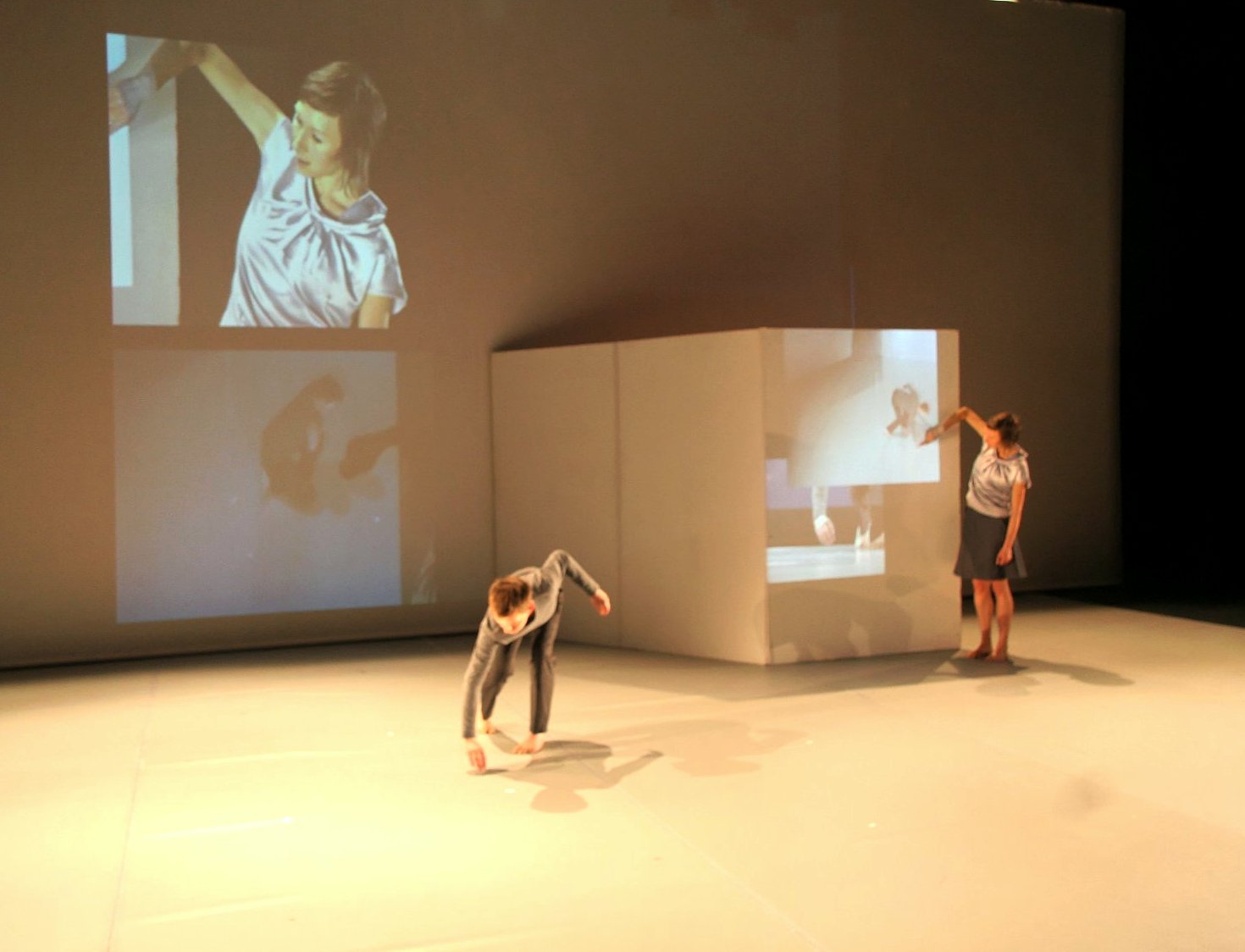Summary of Research Intensive 7 – 11 April
15 04 2008Participants: Helen Bailey, Catherine Bennett, James Hewison, Anja le Blanc, Mary McDerby, Sita Popat, Andrew Rowley, Martin Turner
The aim of this week-long intensive was to explore the use of AG as a performance environment and in particular in terms of the range of levels of engagement with space both compositionally and performatively. This built on and consolidated the previous shorter workshops and provided the context for testing the software developments that have already been made.
I thought for the purposes of the ISEA paper and as a means of framing the research I’d think about the activities and outcomes in terms of different categories of, and engagements with, the concept of space –
Space 1: Compositional Space
In order to push further in terms of consolidating previous work, it seemed necessary to create a more considered choreographic fragment of material to form the basis of the experimentation.Â
1.     Tasks
So I began with a series of choreographic/improvisatory tasks that took various notions of space as a starting point –
- Generative compositional tasks focused on proxemic relations i.e., the nexus of proximity and orientation within the duet form.
- Fragmented approach to the body through an exploration of ‘fixing’ parts of the body in space as an anchor point. The rest of the body motionally relative to this fixed point.
- Scale – the shift from whole body vocabulary to gestural material. The use of focus as a means of framing these shifts.
- Dialogic structure (movement between/across/and in relation to two embodied positions) emphasizing the communicative aspect of the material and the context.
- Textual improvisations exploring different experiential perspectives of ‘space’- (1) journey to work from a first person perspective, (2) experiential commentary on the movement from first person perspective, (3) commentary on proxemic relationship to the other performer whilst performing the material, (4) verbal account of first person perspective of moving through the choreographed duet material whilst not performing.
2.     Choreographic Structure
From the task above material was generated and then structured into four phases –
·       Phase 1: Duet material distributed spatially within the performance space in such a way as to provide the sense from both the performer and spectator postions of non-co-located but synchronous solos
·       Phase 2: Solo (one half of the duet material) performed whilst non-co-located, but synchronously the other dancer performed text based on Textual Improvisation (4).
·       Phase 3: Duet material co-located and including sychronous verbal monologues that intercut descriptions of journey to work with verbal commentary on the movement.
·       Phase 4: Duet material co-located.
Space 2: Physical Space
We used a series of white flats to construct a wall that created a ‘z’-shaped space as a performance environment. This allowed for multiple projection surfaces and for the live performers to have a sense of being in either co-located or non-co-located relationships with one another – both in and out of visual contact with one another. The data projectors were both set-up down stage and parallel with one another . One was at middle level and the other was rigged at a high level. The parameters of the performance space were delineated by the camera orientation and proximity.
Space 3: Camera Space
A clock face system similar to that used in NVC theory, developed by E.T. Hall to document the proximal aspects of social interaction, for the documentation of the camera positions was developed. (It was interesting because this was identified on the fly in a discussion I was having with Mary about meta-data. I will provide a diagram of what I’m imagining later) We used four cameras in live relay mode, however the streams were later multiplied as they were being run through two networked computers. Therefore providing eight separate windows, projected through two projectors for distribution in the physical space.
Generally,  the cameras were positioned radially in terms of orientation, in the horizontal plane in order for the field of vision to overlap, thus giving the opportunity for multiple synchronous images from different orientations. Proximity was radically different ranging from XCU to wide-shot. One camera was placed overhead oriented on the vertical plane and in wide-shot. In terms of level, two cameras were in the middle-level, one low at floor level and one in high-level overhead.
Space 4: Video Space
This category is concerned with the spatial aspects and properties of the projected material only. In terms of software developments this is where really significant progress has been made from a choreographic perspective. We are now able to change the boarders on the individual windows that present the streamed material. The traditional Microsoft ‘Windows’ boarders can now be removed which has a radical aesthetic and semiotic impact on the material. There is also now the capacity to assign different degrees of transparency to individual windows. We didn’t really explore this new development – as the really significant aspect of this will be the ability to then layer multiple windows and play different streams simultaneously in order to create a sense of a ‘shared’ virtual space. This will be ready to be explored at the next intensive.
We documented the position and size and foreground/background relationship of the windows and created a repeatable set of spatial structures in relationship to the live compositional structure of the four phases outlined above. Again a diagram of the spatial relationship of the windows in each phase will follow – I’m reliant on Mary’s metadata documentation for this.
In Phase 4 of the material we configured the windows to use ‘to scale’ projections of the dancers. In particular we used this with the overhead shot of the space. This created an enhanced sense of the ‘liveness’ of the mediated material. The whole concept of scale became significant in terms of its relationship to notions of distance and intimacy in the framing of the body.
As a result of the multi-perspectival images projected there was a fragmentation of the body within the individual frames as a result of the partial views generated from the selected camera positions.
Composite and multiple representations of the dancing bodies were generated through the interrelationship of the different configuration of windows being projected. This articulated an ever shifting proximal relationship, playing with distance and intimacy in a way that highlighted the live (virtual) presence within a mediated rather than live (actual) context.Â
‘Disappearance’ of the virtual performers from the projected material was a really interesting moment – at one point in the performance of the material the live performers accidentally ‘found’ a non-mediatised space within the performance space – so the live/actual material was the only performance visible and the windows remained empty. This was interesting in that it marked an absence, which through into question the ‘legitimacy’ of what they were doing, in performative terms. Both literally and philosophically there was a spatial ‘reduction’ in the material.
Space 5: Performative Space
By this I’m referring to the generative capacity of the performers to construct space(s). So these ideas/thoughts are not limited to a particular category of space, but are perhaps more concerned with defining the principles or concepts that are articulated through the conduit of ‘the doing’ of performance and in the interrelatedness or in-between-ness of these spatial contexts –
- Embodying space – being in the present
- Marking absent space, the trace of disappeared presence, both in motional pathways and in the verbal commentaries
- Emphasis on liveness and ephemerality
-
Dialogic relationship – oscillation between the live and the mediated, the actual and the virtual








